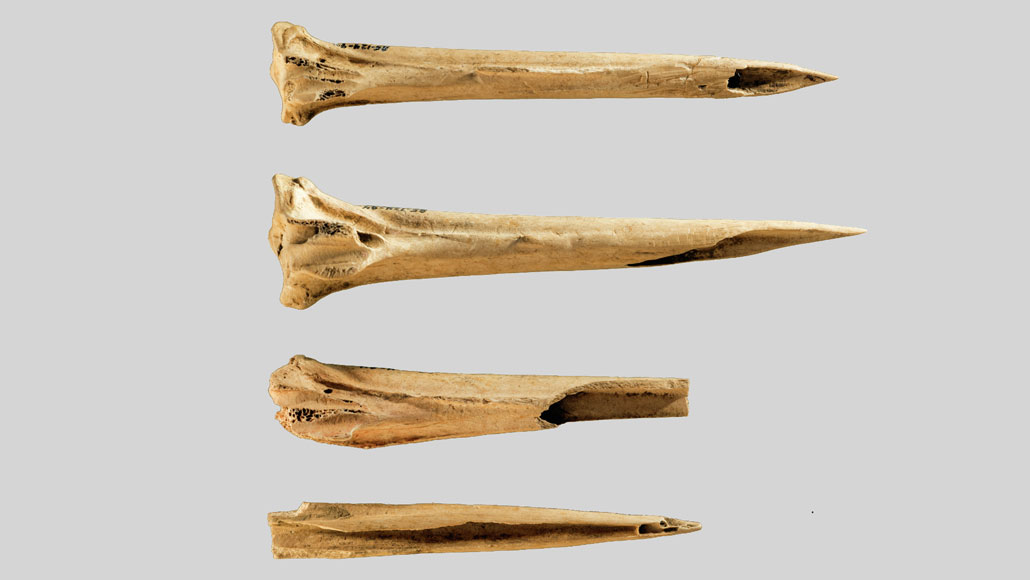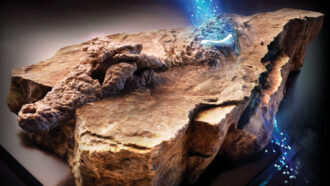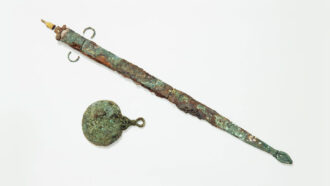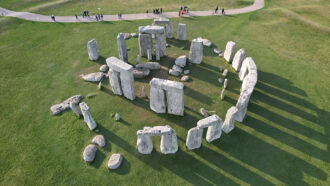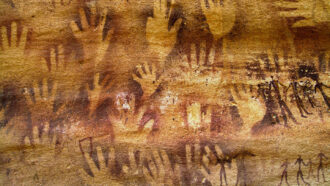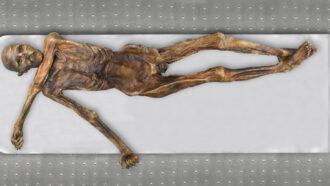anthropologist: A social scientist who studies humankind, often by focusing on its societies and cultures.
archaeology: (also archeology) The study of human history and prehistory through the excavation of sites and the analysis of artifacts and other physical remains. Those remains can range from housing materials and cooking vessels to clothing and footprints. People who work in this field are known as archaeologists.
artifact: Some human-made object (such as a pot or brick) that can be used as one gauge of a community’s culture or history. (in statistics or experiments) Something measured or observed that is not naturally a part of some system. It was instead introduced accidentally as a result of how the measurement or study was performed.
colleague: Someone who works with another; a co-worker or team member.
excavation: A site where someone has systematically removed earth or rock to uncover buried materials of value, such as bones or artifacts.
journal: (in science) A publication in which scientists share their research findings with experts (and sometimes even the public). Some journals publish papers from all fields of science, technology, engineering and math, while others are specific to a single subject. The best journals are peer-reviewed: They send all submitted articles to outside experts to be read and critiqued. The goal, here, is to prevent the publication of mistakes, fraud or sloppy work.
liquid: A material that flows freely but keeps a constant volume, like water or oil.
microscopic: An adjective for things too small to be seen by the unaided eye. It takes a microscope to view objects this small, such as bacteria or other one-celled organisms.
native: Associated with a particular location; native plants and animals have been found in a particular location since recorded history began. These species also tend to have developed within a region, occurring there naturally (not because they were planted or moved there by people). Most are particularly well adapted to their environment.
Native Americans: Tribal peoples that settled North America. In the United States, they are also known as Indians. In Canada they tend to be referred to as First Nations.
pigment: A material, like the natural colorings in skin, that alter the light reflected off of an object or transmitted through it. The overall color of a pigment typically depends on which wavelengths of visible light it absorbs and which ones it reflects. For example, a red pigment tends to reflect red wavelengths of light very well and typically absorbs other colors. Pigment also is the term for chemicals that manufacturers use to tint paint.
remnant: Something that is leftover — from another piece of something, from another time or even some features from an earlier species.
residue: A remnant or material that is left behind after something has been removed. For instance, residues of paint may remain behind after someone attempts to sand a piece of wood; or sticky residues of adhesive tape may remain on the skin after a bandage is removed; or residues of chemicals may remain in the blood after exposure to a pollutant.
tool: An object that a person or other animal makes or obtains and then uses to carry out some purpose such as reaching food, defending itself or grooming.
